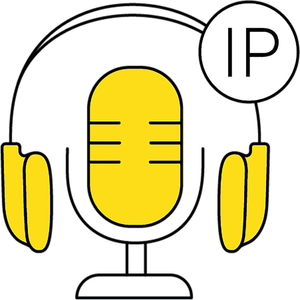
BARDEHLE IP Experts
BARDEHLE PAGENBERG Partnerschaft mbB
All episodes
Best episodes
Top 10 BARDEHLE IP Experts Episodes
Goodpods has curated a list of the 10 best BARDEHLE IP Experts episodes, ranked by the number of listens and likes each episode have garnered from our listeners. If you are listening to BARDEHLE IP Experts for the first time, there's no better place to start than with one of these standout episodes. If you are a fan of the show, vote for your favorite BARDEHLE IP Experts episode by adding your comments to the episode page.
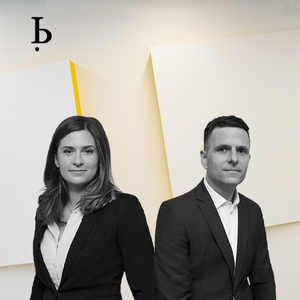
IP Insights: Draft SEP Regulation of EU Commission
BARDEHLE IP Experts
08/02/23 • 5 min
Read our IP Report on the Draft SEP Regulation: https://www.bardehle.com/en/ip-news-knowledge/ip-news/news-detail/updated-ip-report-on-draft-sep-regulation
Today, Tilman Müller from our Hamburg office and I, Ronja Schregle, will discuss the EU Commission’s draft SEP Regulation. The draft was first leaked at the end of March, and on April 27th, the Commission then published the official version. Both documents triggered a lot of criticism by industry stakeholders and immediately became a hot topic in the patent community. But, before we dive into details of the criticism, Tilman, could you maybe give us a short overview of the content of the draft SEP Regulation?
Sure. There are basically two key elements: First, an SEPs register is supposed to be set up at the EUIPO and the draft regulation provides that an SEP can only be enforced in the EU if a family member is listed in that registry. The second key element is a procedure to determine FRAND terms and conditions between two parties. So, both the implementer and the patent holder can request such a procedure at the EUIPO. The SEP Regulation provides that this procedure is mandatory before an SEP can be enforced in court. Any claim brought before the UPC or a national court is inadmissible, unless a “notice of termination” for such a procedure can be shown.
The first pillar, the SEP register, caused a lot of controversy. And I can see why: A key element of this register is that there shall be regular checks whether the patents contained therein are indeed standard-essential. What strikes me as a patent litigator is that this question whether a patent is standard-essential or not is a highly complex issue. So, not only does it require a deep technical understanding in the relevant field, but on top of that, it involves complex legal questions which can be handled differently in different jurisdictions. When you think about the number of patents that would have to undergo this essentiality check vs. the number of experts suitable to do this essentiality check, it becomes obvious that it's hardly practicable in a meaningful way.
And the second pillar, the FRAND determination, is obviously at the center of every SEP litigation. Let’s not forget that in most cases, the parties are able to agree, but in those cases that go to court this is really the key element.
And in cases that do go to court, however, parties do not ask the court to determine FRAND terms. Why do you think that is?
I think it’s because the parties realize how difficult that is. If you look at recent cases such as Interdigital vs Lenovo, you realize how time-consuming and cumbersome this is, including economic expert reports, analysis of dozens of license agreements and so on and so on. And, in the end, no-one knows what result you are going to obtain. Also: If FRAND is a range, as at least the German courts see it, how can you determine one single set of conditions to be FRAND?
Given that having a third party, namely the court, determine FRAND terms is already an option now, but that option is hardly ever – in Germany one could say never – used in practice, makes me wonder whether SEP holders or implementers will be happy to have the EUIPO, an organization which so far has no patent expertise, decide on FRAND terms.
Yes. I think, this is one of the key questions this draft raises: Why is a FRAND determination procedure made mandatory, although neither implementers nor SEP holders have shown much interest in this option in the past? But I generally wonder why the Commission believes that such a massive regulatory intervention is needed. In the empirical assessment report published by the Commission in parallel to the Regulation, it is expressly stated that there is no empirical evidence that implementers are discouraged from developing products or SEP holders are discouraged from participating in standard setting by the current legal environment. Also, there is no empirical evidence that there is any negative effect on consumers. So, the question is: Which problem is the Commission actually trying to fix here?
Well, it is still a long way from this draft to a final regulation. And this will certainly stay a hot topic in the SEP community.
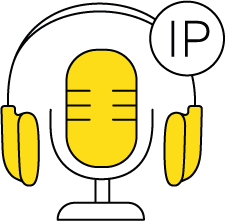
IP Quick Tip: Period of limitation under the UPC Agreement
BARDEHLE IP Experts
01/25/23 • 3 min
Get informed about the UPC on our dedicated website: https://www.bardehle.com/en/upc-special
Welcome to today’s IP Quick Tip on the period of limitation under the Agreement on a Unified Patent Court and possible interpretations of the new legal framework.
Let us have a brief look at Article 72 UPCA:
First, the provision on the period of limitation refers to Art. 24 UPCA, which relates to the sources of law on which the Unified Patent Court is to base its decisions. Here, the key question is whether national law on the period of limitation is applicable in addition and, if so, to what extent.
There seem to be two possible interpretations of the introductory reference:
Either a supplementary application of national law – an approach of ”filling the gap”, as it were: This would mean that national law is applicable only concerning further details which are not answered by the UPCA (which means, for example, national provisions on the interruption or suspension of limitation).
Or a general additional application of national law, in that national law is applicable in addition to Art. 72 UPCA if the relevant national provision would result in a shorter limitation period.
In proceedings for bundle patents and even more so for unitary patents, many national provisions, which are not harmonized, are potentially applicable. Therefore, it appears preferable to interpret the situation such that national limitation law is also applicable if the underlying claim originates from national law.
Second, the UPCA refers to “actions relating to all forms of financial compensation”. This includes regular actions for the award of damages. Non-financial claims, such as claims for injunctive relief are not subject to this restriction.
Third, when the UPCA stipulates that such actions “may not be brought”, this can either be understood to mean that an action would be inadmissible in the first place or – as is the case under German national law – that the defendant has to raise a corresponding objection.
The case-law of the UPCA will have to establish a consistent practice.
In any case, in the early stages of the UPC system, it is certainly advisable to raise the corresponding objection.
Finally, concerning the specific duration of the period of limitation, the UPCA provides for five-year period. The specific calculation is to be carried out according to the corresponding provisions in the Rules of Procedure for every single act of infringement.
In contrast to German national law, the UPCA uses the knowledge of the applicant and not that of the creditor as a basis.
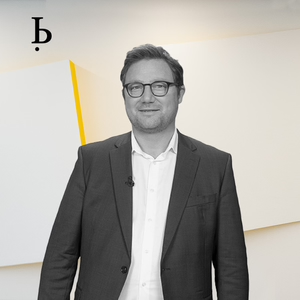
IP Quick Tip: The practical relevance of preliminary injunctions at the UPC
BARDEHLE IP Experts
10/25/22 • 4 min
To register for our webinar IP Experts LIVE on the sunrise period of the UPC, please visit: https://www.bardehle.com/en/ip-news-knowledge/ip-events/detail/the-sunrise-period-preparing-for-the-start-of-the-unitary-patent-and-unified-patent-court
Today, I am going to talk about the practical relevance of preliminary injunctions (PIs) for patent infringement at the UPC.
The respective national case law is all but uniform. In Dutch patent litigation, for example, PIs are very relevant. In contrast, they hardly ever play a role in the UK. In France, their importance has been increasing recently but is still far from day-to-day practice. In Germany, the landscape varies; different instance courts have different practices: while the courts in Düsseldorf and Mannheim are quite reluctant to grant PIs for patent infringement, the courts in Munich and Hamburg generously grant PIs in many cases, not just in the pharma sector but in many other sectors as well.
At European Union level, there is not much related patent case law yet. However, a recently widely reported referral of the first-instance court in Munich, Germany, led the Court of Justice of the European Union (CJEU) to provide some guidance on an important question in April 2022, namely whether or not a successful PI request requires a battle-tested patent. The CJEU found that a battle-tested patent is not required, and more precisely, that national case law, according to which a PI is generally to be refused if the examined and granted patent has not been confirmed again by first-instance opposition or invalidity proceedings, is irreconcilable with Art. 9(1) of the Enforcement Directive. This finding is currently triggering a renaissance of PIs in national patent litigation – at least at courts which have always been open to a significant PI practice like Munich, Hamburg and the Hague – and is thus expected to become similarly relevant before the upcoming UPC.
Just like in national litigation, PIs are available at the UPC based on European black letter law. Moreover, the UPC will have local divisions in Munich, Hamburg and the Hague. At these local divisions, two out of three of the sitting judges will be national judges. It is probably fair to assume that the national judges will somehow import their national view on PI issues to the UPC, at least in the early days. For that reason alone, the local divisions in Munich, Hamburg and the Hague are likely to seriously consider issuing PIs for patent infringement in practice, even when it comes to freshly granted patents which have not been battle-tested yet. Further, the relatively strict German case law on the urgency requirement may well be softened to align with the rather generous Dutch practice.
And finally, maybe most importantly: A significant PI practice allows for creating case law and appellate decisions quickly and thus provides the benefit of some predictability and reliability which is important for an untested, new court. It also allows the various local divisions to compete with each other in attracting patent owners. Such court competition will inevitably take place as many of the UPC judges are appointed for part-time positions with a time limit and must be re-appointed to be entitled to pension claims. Thus, it seems to be the logical consequence that many judges at the UPC will adopt a patentee-friendly approach.
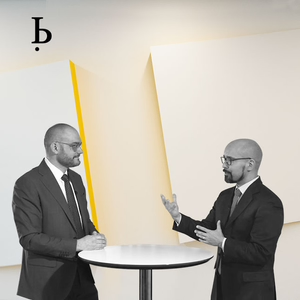
IP Insights: Proportionality considerations in IP
BARDEHLE IP Experts
03/07/22 • 6 min
Connect with Pascal Böhner: https://www.bardehle.com/en/team/boehner-pascal Connect with Dr. Michael Kobler: https://www.bardehle.com/en/team/kobler-michael
What do we do if an infringement does not cover the whole product but only a part of the product? Take, for example, the light of a car, not the whole car. This has become a hot topic in patent litigation as there are new legal developments and a draft bill that is discussed. Before we speak about this draft bill, what is the current situation? Can you give us an overview?
In patent law, one has to distinguish between the various claims resulting from patent infringement. On the one hand, we have, for example, claims for recall and destruction which are excluded if they lead to disproportionate results. This is stipulated in Section 140a of the German Patent Act. And, on the other hand, we have the claim for injunctive relief which is almost automatically granted – and the chances to successfully raise a disproportionality defense are not very promising currently. There is a recent case by the FCJ, the “Wärmetauscher” case, in which the court said that you can, in principle, raise the defense of proportionality, but there are high hurdles and, in the case at hand, the application of this defense was denied. How is this in in trademark and design law?
It’s quite similar. My impression is only that it’s a more established and elaborated system. It’s not as hot, as new, as in patents. We have been discussing this for years. But as you said, we need to distinguish between recall and destruction, or damages, where you have these considerations, and injunctive relief, where it’s more complicated. Especially if you take a case, as I said before, the light of a car: Do we prevent the whole car from being distributed and manufactured, or only that light, if you cannot isolate them - you cannot take the light off the car very easily – in most cases, typically, you have the whole car being subject to a court decision.And, in some cases, granting grace periods has been discussed. Meaning that you get more time to actually comply with the judgment on the infringement, so you have more time to make changes, implement changes that are necessary. Is that something discussed in the patent bill as well?
Indeed. The draft bill suggests that the claim for injunctive relief is excluded insofar as its fulfilment would lead to disproportionate disadvantages for the infringer or for third parties considering the specific circumstances of the case. And “insofar” (in German “soweit”) indicates that the courts have discretion with regard to legal consequences, and the reasoning of the draft bill expressly mentions the possibility of ordering a grace period, for example to sell off infringing products, or to change the production so that the infringing functionality is deleted from the product.Which arguments do you have to make, and which facts do you have to present in trademark law and design law to make that case?
Infringers need to show actual facts and circumstances why complying with the court order immediately is not possible. So, the burden to show that is very high: You need to present facts and arguments showing that the change cannot be made easily and that, balancing all the interests, you need more time. For example, if you have to change your company name, your labels for products, etc., it may not be possible to make the changes now, right away. And then, you can argue “We need a grace period, we need more time to implement the changes.” And another question which is expressly mentioned in the draft bill: Can the owner of the protective right demand a compensation if the claim for injunctive relief is completely denied or partially limited, for example by means of a grace period?
There is little case law on that, confirming such of compensation. But I would say, it would be extremely difficult to get such compensation, because the claim for injunctive relief is limited insofar it would be disproportionate. So, you don’t really have a culpable infringement, which means that you would probably not get a compensation. But, if there is this draft patent bill, of course, even in trademark and design cases, there will be considerations whether we have to apply the same principles here on that topic. When exactly can we expect to have that bill in place?
That is a very good question. The draft bill is currently discussed, and a final vote by the German parliament, the Bundestag, is expected for the spring of 2021. But, of course, the wording may still change because there is an active and hot public debate. And public statements are being presented, for example, by the association of German car manufacturers. So, it will be interesting to see when and in what form there will be a change to the ...
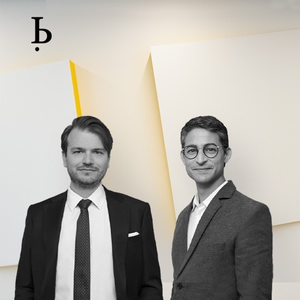
IP Insights: Copyrights and AI generated works of art
BARDEHLE IP Experts
08/30/23 • 6 min
Subscribe to our newsletter: https://www.bardehle.com/en/newsletter-subscription
Philipe, what are AI generated works in the first place and what is the question?
Well, Jan, to put it simply, AI generated works are creations that have been developed by a computer program instead of a human being. The most fundamental question in connection with AI and copyrights is whether such creations are eligible for copyright protection at all. The question arises because, according to our German and also the general European understanding, only humans can be creators in terms of copyright law. In the case of AI generated works, humans have admittedly created the AI, but not the specific creation. Unlike creations that have been developed with the mere help of computer technology, the special characteristic of AI generated works is that - even though humans can dictate the general line of art – the final result is ultimately beyond human control.
That’s correct. I can, for example, ask Open AI’s Dall-E to create an expressionistic painting for me, or ask ChatGPT to generate a winter poem. In both examples, I dictate general direction, but leave all further decisions to the AI. These decisions do not only refer to details of the outcome. However, only an intellectual creation of one’s own is considered as a work in the sense of German copyright law, and according to our current understanding, an intellectual creation by my own requires the creative act of a me as a human being. The same applies if one refers to the European concept of works based on European case law, according to which a work qualifies as an intellectual creation only if the personality of an author is expressed. Does that mean that AI-generated works are generally not entitled to copyright protection? After all, not only can I steer the AI in a general direction with general instructions, I can also tell it quite specifically what to do.
Correct. If I define the conditions of the creation so specifically that the result is not completely undetermined and appears to be mere coincidence, but rather the expression of my concrete human will, such creations should be protectable under copyright law. However, the requirements for such human specifications are currently quite strict. By the way, this is not only the case in Germany, but also in the United States. But while we here in Europe are still in the process of discussing how to deal with AI-generated works, the US Copyright Office has already rendered guidelines in March 2023, explaining in more detail the distinction between AI-generated works on the one side and human creations on the other. According to said guidelines, to the extent that traditional elements of authorship are ultimately determined and executed by the AI and not a human, respective creation is assignable to the AI and not to a human. In this case, copyright protection is ruled out. So, in the end, it is a question of whether I gave rather general instructions to the AI, whereas the specific result remains open, so that numerous complex decisions regarding the literary, the artistic, or the musical expression or the elements of selection and arrangement are made by the AI during the creation. The mere request to the AI to create something is thus treated like the instruction to a commissioned artist, where the artist is given the framework, but the implementation is left to the commissioned artist him- or herself. In contrast, if AI-generated material is selected or arranged by a human in a sufficiently creative manner, copyright protection is available under the US guideline you mentioned. Another example of cases where copyright protection should be available is where AI-generated material is only used as a starting point for further creation.
This is transferable to German copyright law. It is already recognized that the selection and creative composition of content may be sufficient to substantiate your copyright protection. Even the case in which AI-generated works are used as a starting point for new creations should be covered by German law already. So, in conclusion, no need for action in the field of AI and copyrights?
There rather isn’t. A special ancillary copyright, which would protect AI-generated material independently of human creation, is often mentioned, but does not seem to be absolutely necessary. In any case, it has to be seen how the areas of application of AI will develop.
This is exactly what we will do to keep you informed of must knows in the field of AI and copyright. Thank you for your attention!
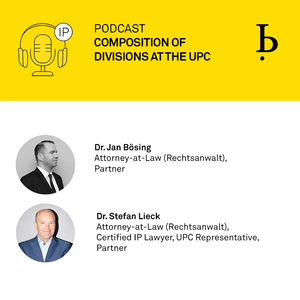
IP Insights: The composition of Divisions at the UPC
BARDEHLE IP Experts
05/17/23 • 3 min
Get informed about the Unitary Patent and UPC on our dedicated website: https://www.bardehle.com/en/upc-special
Stefan, today we want to talk about the judges at the UPC divisions, in particular our expectations for the German local divisions. But let’s start on a higher level. I think we agree that the German local divisions will become very important venues for UPC actions. Why do you think that is?
One main reason is that due to the high number of patent cases in Germany in the past, all panels at the four local divisions in Germany consist of two legally qualified judges from Germany and one legally qualified judge from a foreign UPC member state. This should increase the predictability compared to divisions of the UPC with a majority of foreign judges.
For example, the Munich local division might become the go-to venue for preliminary injunctions at the UPC, considering that - in the past – the Munich judges were more willing to grant preliminary injunctions for patent infringement than other German courts.
And Munich could also become a preferred venue for SEP cases, as the Munich judges have attracted a lot of SEP plaintiffs in the past due to their approach to the FRAND objection.
This might also apply to the Mannheim local division, as the Mannheim judges applied the FRAND objection similarly to the Munich judges. So, Mannheim could also become an attractive venue for SEP cases. What about Hamburg and Düsseldorf?
I think Hamburg could become a preferred venue for pharma and biotech cases, because one of the judges has a chemical background and is very experienced in these fields. And Düsseldorf as the hot spot for patent litigation in Europe over the last few years has traditionally been a very preferred venue for SMEs, which could very well continue at the UPC.
Of course, so much can change over time, particularly since the case law will likely be harmonized through decisions by the court of appeal. But I really think that the German local divisions are set up very well for the start of the UPC.
Absolutely, and I think we are looking forward to our first cases there.
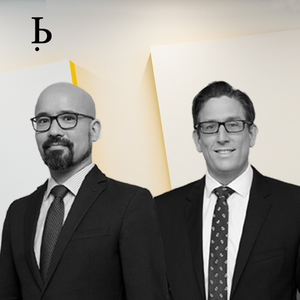
IP Insights: Prior use rights at the UPC
BARDEHLE IP Experts
06/21/23 • 5 min
To dive deep into the Unified Patent Court, please visit: https://www.bardehle.com/en/upc-special Subscribe to our IP Reports: https://www.bardehle.com/en/newsletter-subscription
Today, Michael Kobler and I will discuss the “Right based on prior use to an invention” in Article 28 of the UPCA. Such prior use right can give the defendant an important defense tool in patent infringement proceedings. Before we go into some detail, Michael, could you summarize the purpose of such prior use right?
Sure, the purpose of the prior use right is to compensate for deficits of the so-called “first-to-file principle”. This principle means that the first person to file a patent application for an invention is entitled to the patent rights – not the first person who makes the invention first. While this provides for a high degree of legal certainty, it can also lead to an unjust situation where a person who was already in possession of the invention at the application date, but decided not to file a patent application, is attacked for patent infringement. So, let us have a look at the UPC Agreement now: What does Art. 28 of the UPCA say?
Art. 28 UPCA provides for a dynamic reference to the applicable national provisions. This means that there is no pan-European prior use right. So, each member state has its own prior use right with effect only within the territory of the respective UPCA member state. As the UPC will have to apply these different national provisions on the respective prior use rights, it will play an active role in harmonizing these different principles and concepts. Now, turning to the prerequisites of these national provisions: What are the overarching principles according to your experience?
I see three main prerequisites which the defendant has to substantiate and prove: First, the prior user must be in possession of the invention. Which means, objectively, the invention must exist, for example in product descriptions or technical drawings and, subjectively, it must be recognized as an inventive idea. Possession also means that the invention is executed on an industrial scale in general. However, certain preparatory acts may be sufficient if the prior user can show that they were determined to start commercially exploiting the invention very soon. Second, the prior user themselves, and not a third party, must be in possession of the invention and exploit the invention. In other words, in most member states, such as Germany and France, the prior use right cannot be transferred or assigned individually, but only together with the business unit for which it was established. Third, and this is certainly the vaguest prerequisite, the prior user must act honestly and fairly. Dominik, what are the main legal effects of the various national prior use rights?
Well, above all, the prior user cannot be attacked for patent infringement because the acts become lawful in relation to the patent proprietor. However, this legal benefit only extends to the territory of the respective UPCA member states. For other member states, the defendant should substantiate the relevant prior use rights based on the relevant national provisions which apply in the respective UPCA member states. Once the different national prior use rights are harmonized, this could lead to same results for all UPCA member states if the defendant is able to substantiate the relevant prior use rights for these UPCA member states. Plaintiffs, on the other hand, may want to carve out those UPCA member states from their complaint for which they believe the defendant could be able to substantiate prior use rights. As of today, in many member states, the scope of the relevant prior use right must be defined autonomously. For example, the scope of the German prior use right does not extend generally to further developments if such further developments go beyond the initial prior use and intervene with the invention. In this respect, in Germany, quite sophisticated case law applies which needs to be assessed carefully.
What about third parties, particularly customers? Can they benefit from the prior use right?
In Germany, this is not excluded based on the principle of “de facto exhaustion”. However, this will be certainly one aspect which will be harmonized by the UPC over time.
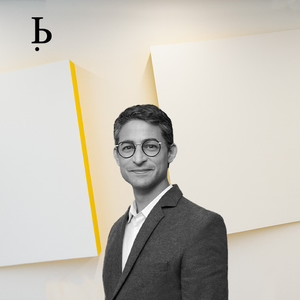
IP Quick Tip: Hague Filings
BARDEHLE IP Experts
07/05/23 • 1 min
Connect with Dr. Philipe Kutschke: https://www.bardehle.com/en/team/kutschke-philipe Read about our services in the area of designs: https://www.bardehle.com/en/competences/legal-areas/designs
One way to obtain international protection for the appearance of your new product are international design filings via WIPO, so called Hague filings. Today, this route enables you to obtain design protection in up to 95 countries worldwide, including the EU, the US, and China.
Hague filings can significantly simplify your design portfolio management and save costs. They are therefore recommendable in many cases. However, despite a comparatively high degree of international harmonization, some national particularities still exist. The most prominent differences concern the duration of design protection, the availability of deferred publication, and fees.
When filing a multiple design application, you have to keep in mind that certain jurisdictions provide particular requirements. As regards a priority claim, simply designating the DAS Code may not suffice in all designated countries. WIPO’s online tool for Hague filings provides excellent guidance regarding many national particularities.
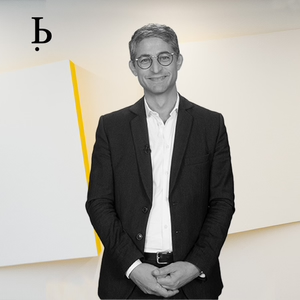
IP Quick Tip: Trademarks for the Metaverse 101
BARDEHLE IP Experts
12/07/22 • 2 min
Get informed about our trademark-related services: bardehle.com
The good news is that there is not yet a trademark office in the Metaverse. This also means that you should be suspicious should you receive any emails or letters from a Metaverse trademark office asking for payments.
Trademarks for the Metaverse have to be filed with the usual suspects: the physical trademark offices all around the world. Based on what the EUIPO has published so far, here is what you should know when drafting the list of goods and services of your EU trademark applications for the Metaverse:
Given that the Metaverse is a virtual world, the goods there are also virtual goods. These virtual goods are images, so they are digital content. With this knowledge in mind, it should also become clearer how to classify individual goods.
Firstly, the goods belong to Nice Class 9.
Secondly, keep in mind that the term “virtual goods” is considered not to be sufficiently clear. So you have to specify it further by stating the content to which the virtual goods relate.
Here’s an example: If you want to file a trademark application for virtual shirts, you could file a trademark application in class 9 for “downloadable virtual goods, namely, virtual shirts”.
In contrast, the classification of services relating to virtual goods remains unchanged. Thus, retail services in the Metaverse, for example, still belong to Nice Class 35, with retail services still having to be specified.
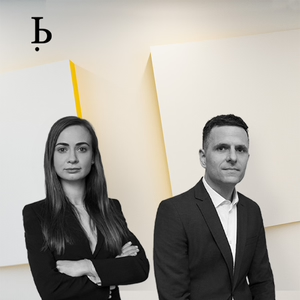
IP Insights: File wrapper estoppel
BARDEHLE IP Experts
09/27/23 • 4 min
For a deep dive into the Unified Patent Court, please visit: https://www.bardehle.com/en/upc-special
In the context of the UPC, the file wrapper estoppel will become highly relevant, because some UPC member states do recognize the file wrapper estoppel in their legal systems. However, other member states, such as Germany, do not. Before we go into detail, Julia, could you explain what “file wrapper estoppel” means?
Under the doctrine of the file wrapper estoppel, statements made by the patentee vis-á-vis the patent office during prosecution are binding. It is noteworthy that in the end we are talking about “clear statements”, as the prosecution history is often rather vague.
However, in some instances, the applicant concedes to a narrow claim interpretation during prosecution proceedings in order to overcome objections of lack of novelty or inventive step. The file wrapper estoppel in these cases prevents the patentee from arguing a broader claim interpretation in subsequent infringement proceedings.
The file wrapper estoppel is also very important for cases which are argued under the doctrine of equivalents. If the applicant does not claim protection for certain embodiments so that such embodiments are not covered by the literal sense of the granted claims, it might be difficult in the light of such prosecution history to claim protection for these embodiments under the doctrine of equivalents.
But some terms may have a very specific meaning in the patent description. And the prosecution history can help to understand what exactly the patentee wanted to protect.
In German patent litigation, statements made by the patentee during prosecution are not binding for claim construction. They can only serve as a mere indication of how the person skilled in the art would understand a certain claim feature.
But there is one exception: Statements limiting the claim scope made during pending invalidity proceedings. Such statements are considered binding and thus limiting the claim scope if the parties in the invalidity and the infringement proceedings are identical.
What is also relevant for claim construction in Germany is the prior art mentioned in the description. A skilled person understands that the patented invention must distinguish itself from such prior art, as it cannot be assumed that the patentee wanted to patent such prior art. Therefore, prior art appreciated in the description is the starting point and one of the most important means of claim construction.
Show more best episodes

Show more best episodes
FAQ
How many episodes does BARDEHLE IP Experts have?
BARDEHLE IP Experts currently has 66 episodes available.
What topics does BARDEHLE IP Experts cover?
The podcast is about Intellectual Property, Podcasts and Business.
What is the most popular episode on BARDEHLE IP Experts?
The episode title 'IP Quick Tip: Invention disclosure report for AI-related inventions' is the most popular.
What is the average episode length on BARDEHLE IP Experts?
The average episode length on BARDEHLE IP Experts is 4 minutes.
How often are episodes of BARDEHLE IP Experts released?
Episodes of BARDEHLE IP Experts are typically released every 7 days.
When was the first episode of BARDEHLE IP Experts?
The first episode of BARDEHLE IP Experts was released on Mar 1, 2022.
Show more FAQ

Show more FAQ